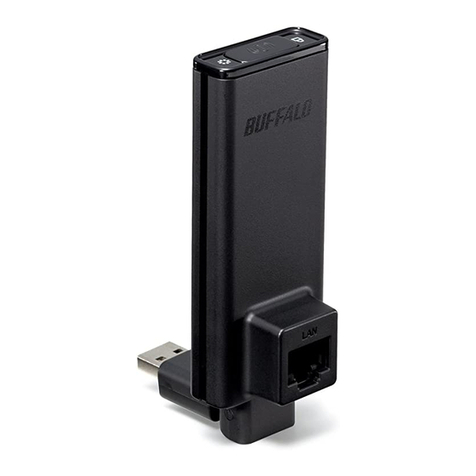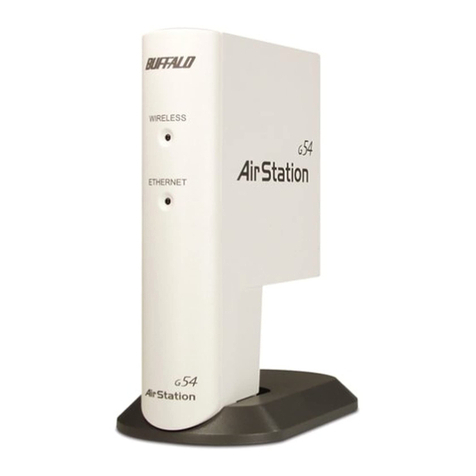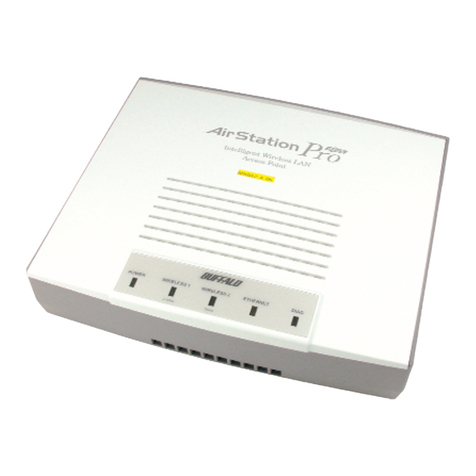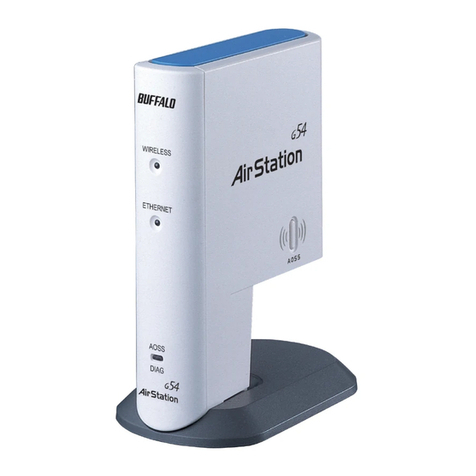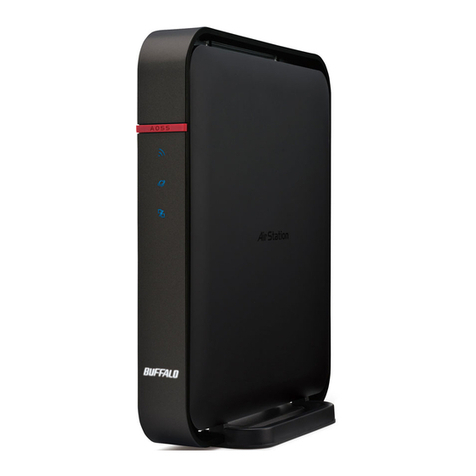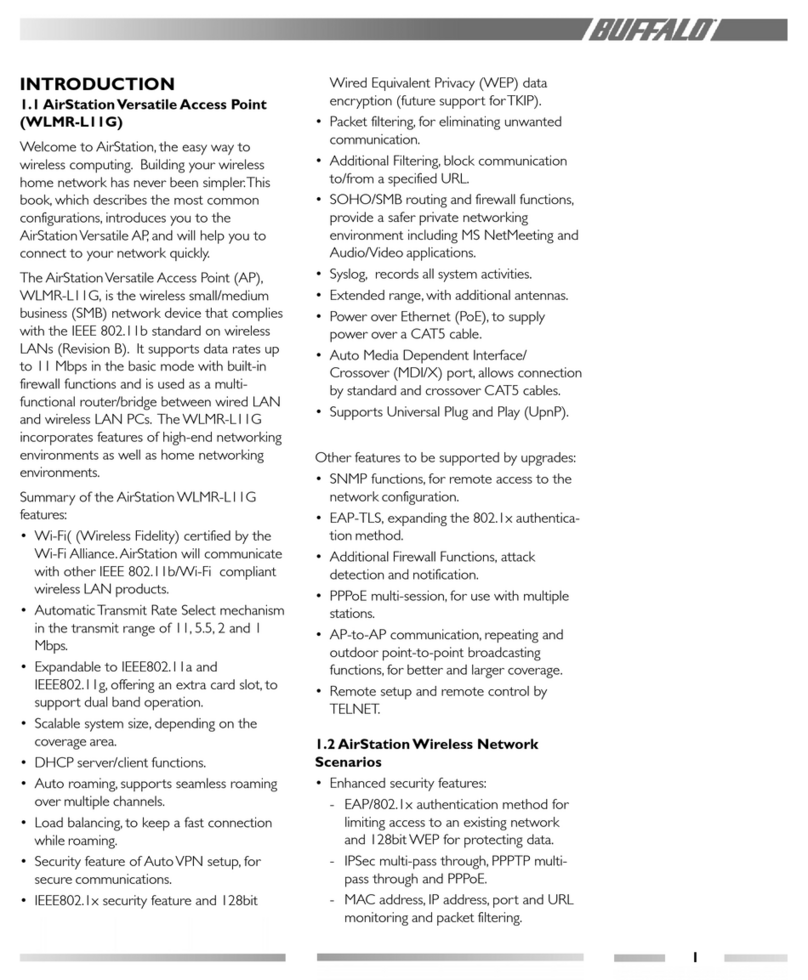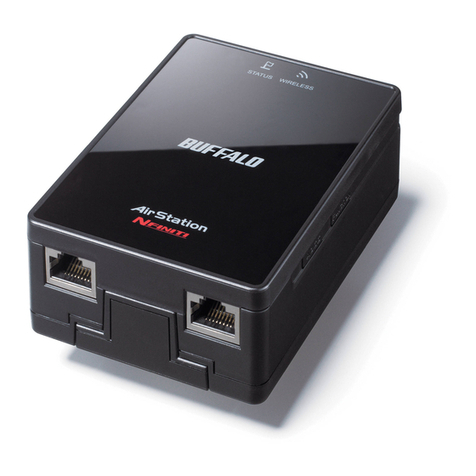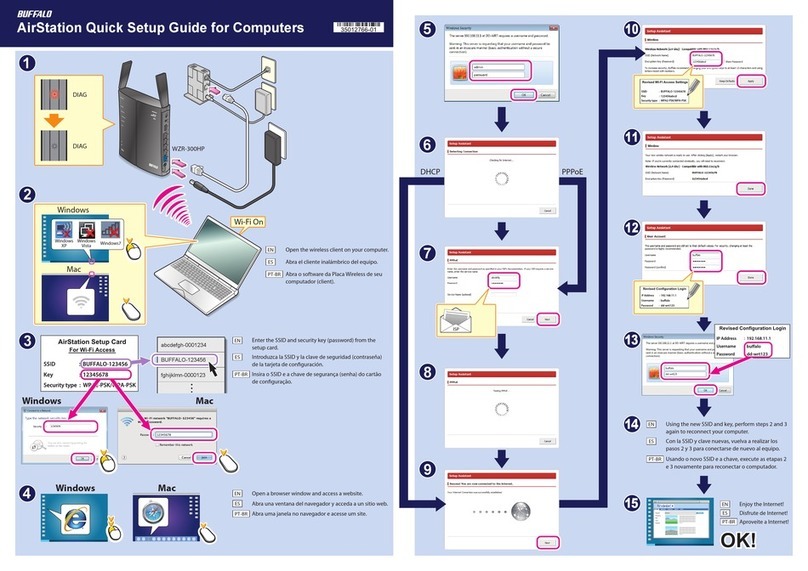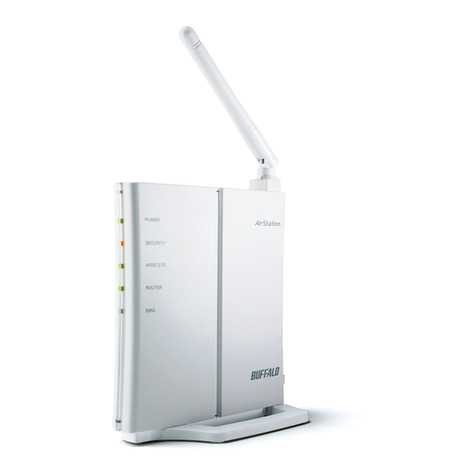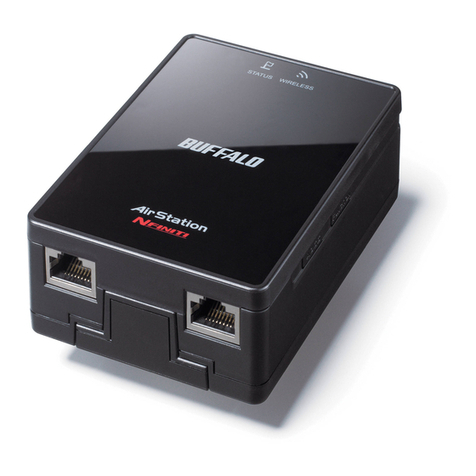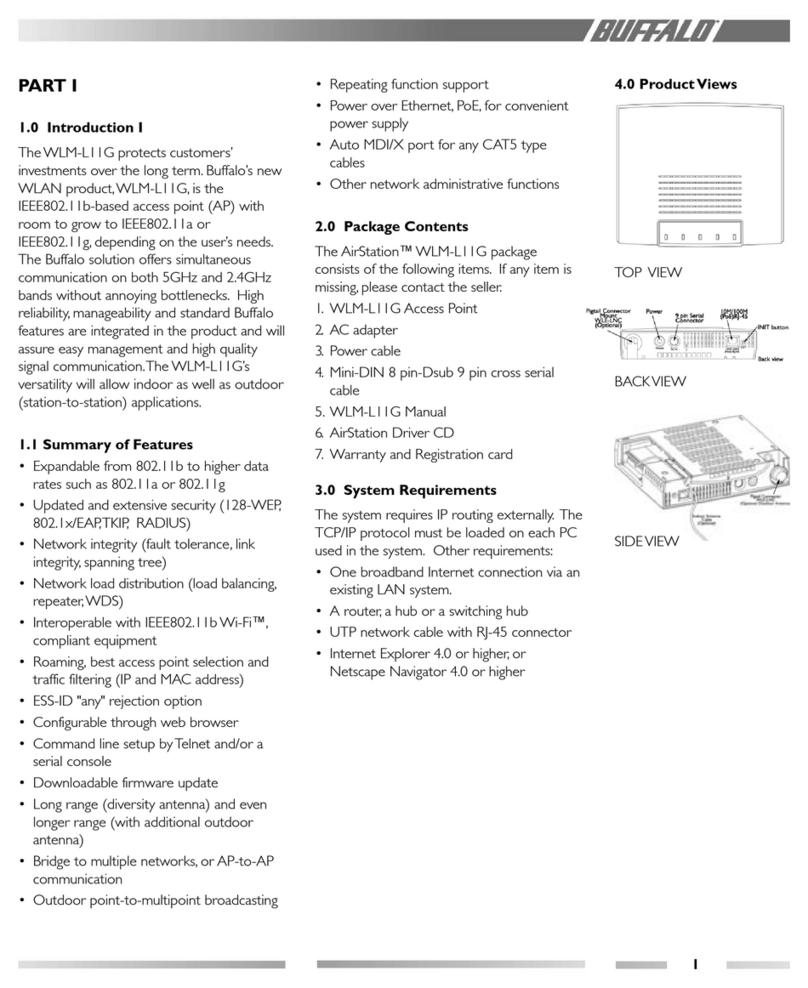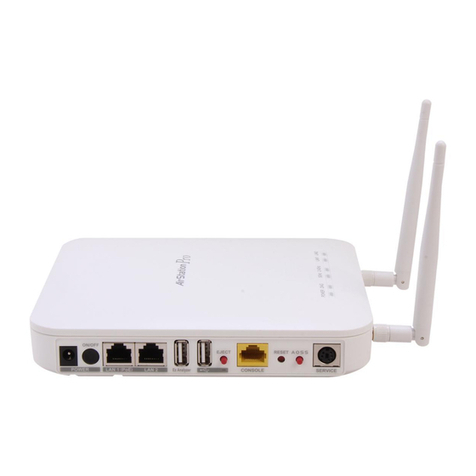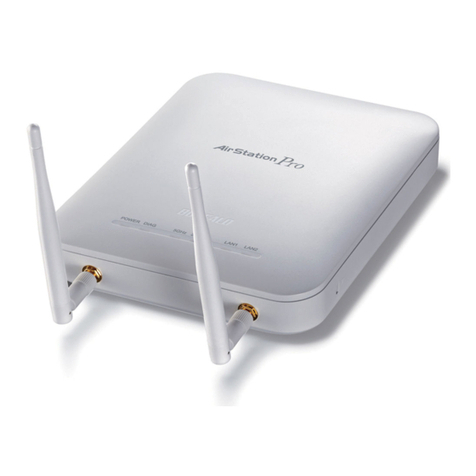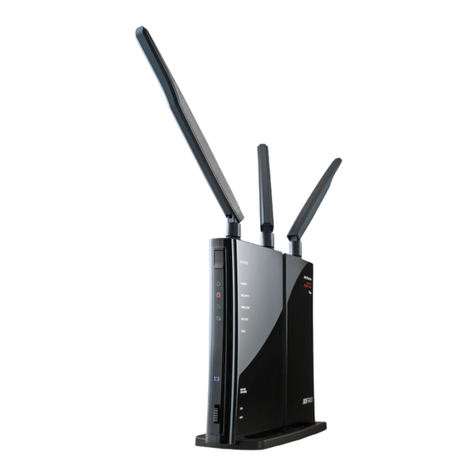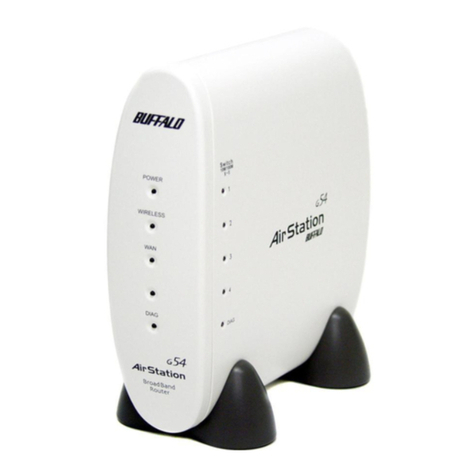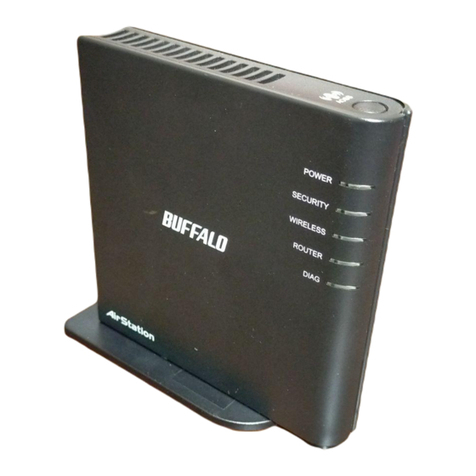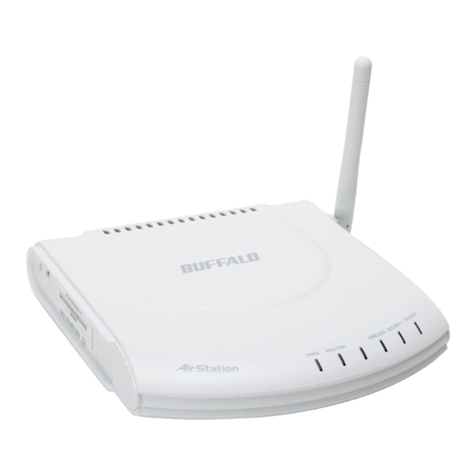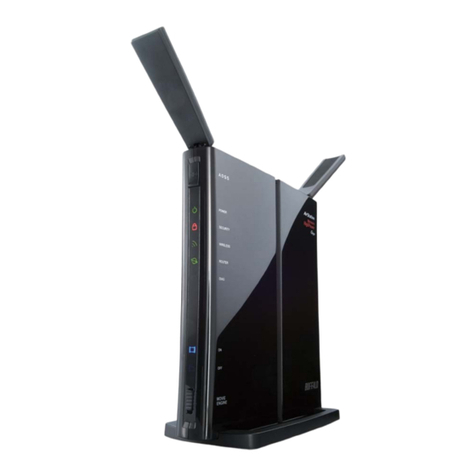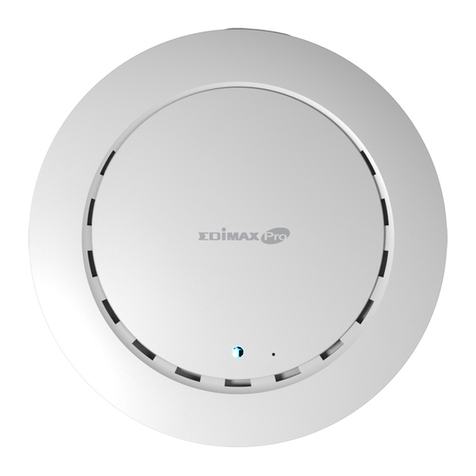
6
4.1.2 Wireless LAN Security
Broadcast SSID - This setting turns off SSID
broadcasting which makes the AirStation invisible to client
surveys. Clients will have to be manually confi gured to
connect to an AirStation with SSID broadcasting turned off.
The only options are to allow or deny connections for
these types of clients, thus, wireless networks requiring
security should mandate an encryption policy to preserve
security if SSID broadcasting is allowed.
Data Encryption - Select encryption type of wireless
data communication.
Disable - Disable data encryption.
WEP - Using WEP encryption. Encryption key should be
entered. When an encryption standard is implemented into
a wireless network, a WEP key is used between the client and access point to successfully encrypt, transmit and decrypt data. For this
reason, the same WEP key must be used for communication by the client and the access point with which it is attempting to establish
a connection session. An access point and client may both carry multiple WEP keys. It is necessary for not only the WEP keys to
match, but also the WEP key’s location or number. If a wireless client can not support multiple WEP keys, the AirStation’s must be
confi gured to transmit key number 1 for a connection to take place.
■ WEP Key Input Formats
64bit ASCII: 5 digits of alphanumeric characters, “ab34Y”
128bit ASCII: 13 digits of alphanumeric characters, “123456abcdef7”
64bit HEX: 10 digits, using characters 0-9 and a-f, “00234ABCDE”
128bit HEX: 26 digits, using characters 0-9 and a-f, “20123456789abcdeabcdeabcde”
TKIP - Using TKIP(Temporal Key Integrity Protocol) for data encryption.
AES - Using AES(Advanced Encryption Standard) for data encryption.
WPA-PSK - Authenticate with the AirStation using WPA-PSK (Pre-shared key), and then encrypt data using TKIP or AES. The
wireless client’s settings must use the same encryption method and key.Select “TKIP” or “AES” as the [Data Encryption].
■ WPA-PSK Input Formats
8 to 63 characters in ASCII or 64 digits hexadecimal key.
Example 1: [airstation-WPA-PSK]
Example 2: [0123456789abcdef0123456789abcdef0123456789abcdef0123456789abcdef]
WPA Re-key interval - When TKIP or AES is selected, the encryption key is renewed at this interval. This interval is in seconds;
the range of acceptable values is 0-3600.
If 0 is entered, key is never renewed.
■ Note: The lower the rekey interval is, the more often a rekey happens. Setting this number low may slightly affect your
performance.
4.1.3 LAN Port
Set LAN interface parameters.
IP address - Allows ad min is tra tor to select whether AirStation is
assigned an IP address by a DHCP server or specify a static IP and
Subnet Mask for the LAN side of the AirStation.
■ Note: If the AP’s IP address is changed to a different range, the
setting PC’s IP must be changed to the same range to continue
confi guration. Then restart the setup session from the AirStation
utility screen.
Default Gateway - Allows administrator to use the Default
Gateway address (the AirStation’s IP address), assign a specifi c Gate-
way address, or block clients from Gateway notifi cation.
DNS (Name) server address - Allows administrator to use
the default DNS address (the AirStation’s IP address), assign specifi c
DNS addresses, or block clients from DNS address notifi cation.
